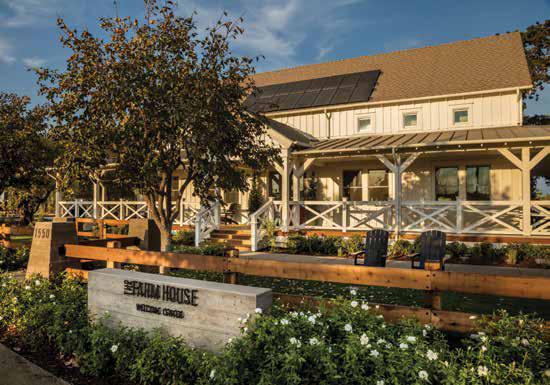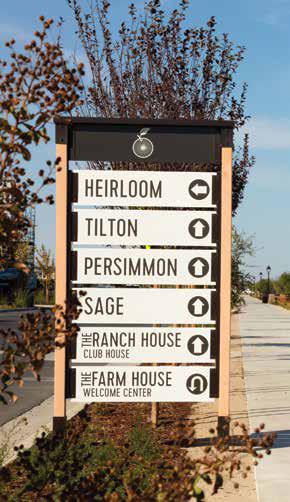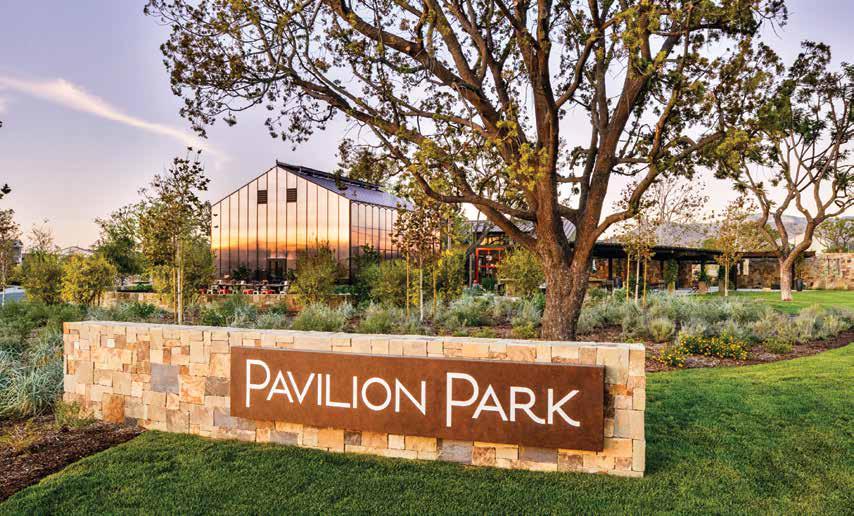
6 minute read
From the Roundtable A Message From the Board
Several years ago, the CACM Board of Directors instituted term limits, thus limiting the number of three-year terms a director could serve to two terms. This action was in response to a growing need to address succession in our volunteer leadership, to ensure the organization continued to evolve with new and fresh perspectives and to offer an opportunity to others to serve the organization at the board level.
The 2015 slate of candidates saw seven highly qualified and dedicated members nominated for the five open positions on the board. This is clearly a solid indication that the decision several years ago was a good one! With that said, I’d like to welcome our newest CACM directors, Melissa Bell and Tom Freeley, and congratulate our returning directors Carra Clampitt, Tiffany Lynch and Robin Romo.
The CACM board will participate in multiple events this year – at least five board meetings, a two-day strategic planning session as well as other events and Regional Forums. They have also committed to serve on board committees. Directors are listed on page 58 for your information and reference.
I would be remiss to let pass the opportunity to thank our outgoing director, Mary Walker. Mary served four consecutive terms on the board. In her capacity as director she has served as an ambassador as well as the recent Chair of the Ethics Appeals Committee. Mary is 100 percent dedicated to our industry and CACM, and although her board term has expired, I expect she will continue to serve this organization for years to come. As I enter my year as chair of the board, I want to recognize CACM’s immediate past chair, Gordon Goetz. Gordon has been an inspiring mentor and his leadership style is one I hope to emulate. 2015 was Gordon’s second time serving as chair of the CACM board, and under his leadership, CACM prospered during the transition to our new president & CEO, David Zepponi. You might have anticipated this past year of transition to be one of simply maintaining the status quo. That has proven to be far from the case. Recognizing the immense talent of some of the existing CACM staff, Dave built a new organizational structure around them and other key new hires. This has proven to not only bring professional growth opportunities to CACM’s tenured staff, but has led to several positive changes to long-standing CACM classes, programs, events and other benefits to you, our members. In a year while he also absorbed all things “common interest development” and industry legislation, Dave and his newly formed management team undertook a study of our industry realities, impacts of consolidation and our industry role, to introduce new programs, membership levels and opportunities for CACM to grow and serve our membership. As we look to 2016, we see the promise of another year of progression for CACM, and I trust you are as enthusiastic and excited at what CACM has to offer, as On behalf of the CACM Board, I am! Kathryn Henricksen, CCAM Board Chair
UNCOMMON VISION TAKES SHAPE IN TWO CALIFORNIA HOA DEVELOPMENTS
BY CECILIA N. BRENNAN, ESQ.
s managers, board members and service providers, we are often faced with budget issues, rule enforcement and problem-solving rather than community-building and neighborly interactions. However, the vision and perspective of two new developments in California contain inspiring elements based partly on a previously uncommon vision for HOA developers: sustainability, clean energy and a “farm-to-table” model.
Who would have imagined that a former military base or a former tomato processing plant would be converted to innovative developments focused on community, outdoor space, drought-tolerant landscaping and low-impact transportation? Thanks to new developments in Irvine and Davis, such models have become a reality.
In Irvine, FivePoint Communities has embarked upon a unique project called “Great Park Neighborhoods,” which is designed as a mixed-use project hosting homes, shops, parks, offices and schools, all in a sustainable, connected community. Continued on page 16

Fostering Community & Sustainability
Continued from page 15
The development features a smalltown square with a modern barn aesthetic, along with a community greenhouse with outdoor dining spaces and a “bike barn” where cyclists can tune up their wheels. “The ‘Life will be different here’ mantra is the foundation of Great Park Neighborhoods’ spirit … miles of walking trails, bike paths and bridges will join the neighborhoods, connecting residents to the Orange County Great Park, to nature and to each other. Perhaps one of the most exciting highlights is the connectivity that the residents experience,” explains Jamie Cross, lifestyle coordinator with Great Park Neighborhoods and a member of the FirstService Residential team.
The vision of the project has been unique and inspiring for both residents and management, as can be witnessed by what manager Holly Maddalena, district manager with FirstService Residential, shares: “Great Park Neighborhoods Community Association is completely unique in our diverse programming, lifestyle and feel. The creativity from the developer is inspiring and it greatly motivates me to ‘get creative’ in my everyday tasks. As the manager of Great Park Neighborhoods, I feel so much pride in being involved with an innovative and forward-thinking association… As a managing team we are always trying to be innovative in our approach and staying fluid in keeping up with the needs of the owners to create a cohesive and happy environment.”
A similar concept is underway in Northern California, where forwardthinking developers recently embarked upon a new community built on the grounds of a former Hunt-Wesson tomato factory. “Life Tastes Better Here” is the motto you read when entering the website for The Cannery, a new common interest development in Davis (www.livecannerydavis.com.) The Cannery sits on 100 acres and will

include over 550 homes of various configurations, nearly 30 acres of parks and open space, an amphitheater, a Market Hall anchoring up to 172,000 square feet of commercial space and a working farm. The farm will be a training ground for beginning farmers, as well as a commercial venture. “Through a collaborative effort with the Center for Land-Based Learning of Winters, Calif., the Urban Farm will serve as a state-of-the-art example of sustainable urban farming and as an agri-classroom for students and beginning farmers,” says Kevin Carson, Northern California president for developer The New Home Company.
The Cannery was based on cutting-edge technology with a concern for the environment, but also was conceived to be “down-to-earth,” with its extensive outdoor gathering spaces for enjoying one’s families and neighbors. The physical project is focused on a lowimpact, community-centered model, encouraging less reliance on cars and emphasizing accessibility, open space and human interaction. As Carson notes, “every home is within 300 feet of a trail or park, which we believe adds to the social connectivity of the community.”

It is not only the physical layout of Great Park Neighborhoods or The Cannery that makes them unique. Both projects included a vision to create mixeduse, multi-generational neighborhoods that would “bring homes, businesses and parks together in a sustainable manner.” As Cross states, “current and potential homeowners see Great Park Neighborhoods as a unique alternative to what Irvine is used to seeing. The response has been a positive one, as homeowners enjoy being able to choose which style of product they prefer.”
While the Great Park Neighborhoods and Cannery models appear to be unique and isolated, they could be replicated in any community. In fact, many of the highlights of these projects have nothing to do with their newness: chatting with neighbors, picnicking in the park, eating outdoors from your own local garden – these ideas can become a reality, wherever there is a will and vision.
Cecilia N. Brennan, Esq., is an attorney with The Perry Law Firm, APLC, which serves clients throughout Southern California.










